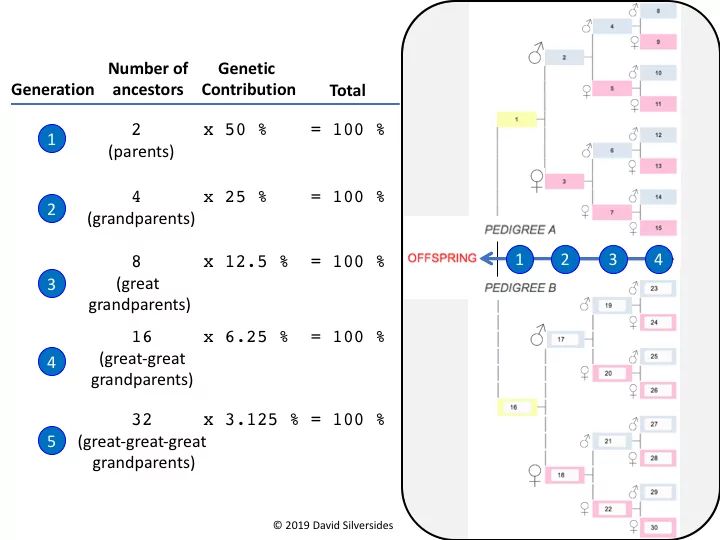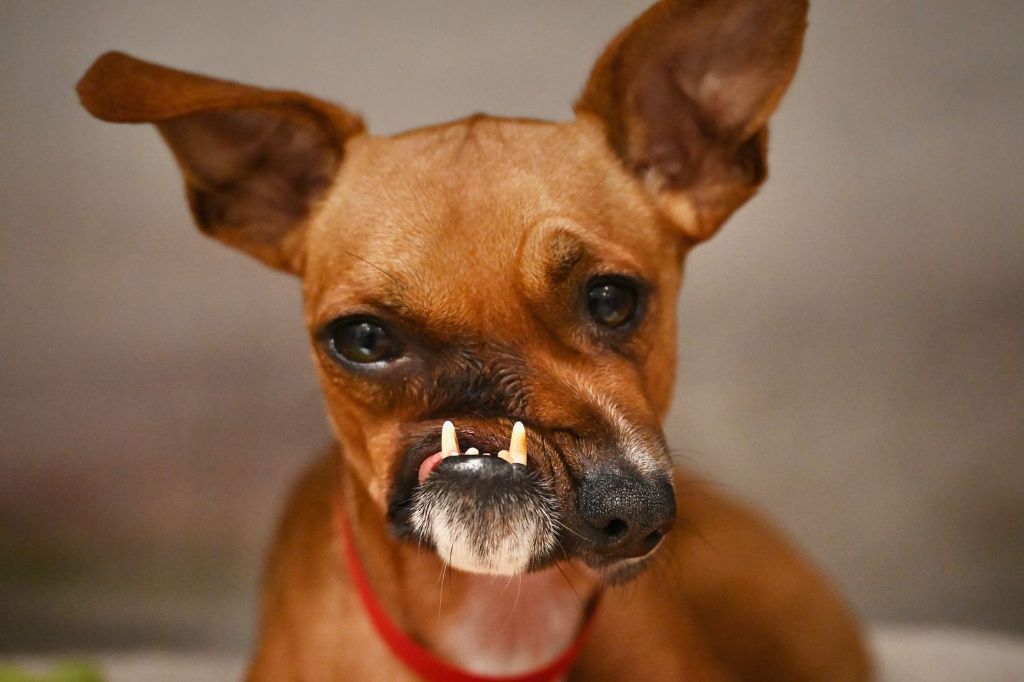Introduction
The topic of this article is whether half-sibling dogs—dogs that share one parent but have different mothers or fathers—can safely mate and produce healthy puppies. There are concerns around the genetic risks of closely related dogs mating, as well as ethical considerations around purposeful inbreeding.
Genetic Relation Between Half Siblings
Half siblings share around 25% of their genes, which is the same amount that first cousins share. This is because half siblings only have one parent in common. Full siblings, who have both parents in common, share around 50% of their DNA.
Specifically, half siblings will on average share 1,756 centimorgans of DNA with a range of 1,160 to 2,360 centimorgans. This amount can vary substantially, but generally falls within the range expected for first cousins and half siblings [1].

The reason half siblings share around 25% of DNA is that they only inherit half of each parent’s DNA. Full siblings inherit roughly 50% from their mother and 50% from their father. But for half siblings, who have one parent in common, they only share the 25% that comes from that one common parent [2].
Risks of Inbreeding
Inbreeding comes with an enhanced risk of health and behavioral problems in puppies. Breeding closely related dogs, such as a father and daughter, increases the chances of passing along defective genes and doubling up on undesirable recessive traits. According to Breeding Father to Daughter Dogs: Vet-Reviewed Risks, inbreeding raises the prevalence of hereditary health conditions including heart problems, joint dysplasia, certain cancers, autoimmune disorders, vision and hearing impairments, and skin conditions. Immune system deficiencies are also more common, making inbred puppies more susceptible to infectious diseases.

Beyond physical ailments, there are also risks of neurologic and behavioral issues in puppies from an incestuous mating. Research shows increased rates of aggression, anxiety, fearfulness, and cognitive deficits. The lack of genetic diversity can limit overall vitality. While all breeding presents health risks, inbreeding amplifies the chances of puppies inheriting problematic recessive alleles from both parents.
Ethical Concerns
Some breeders have ethical concerns about mating half siblings or dogs that share the same father or mother. Inbreeding of closely related dogs increases the chances of genetic defects and inherited diseases. According to one source, “An increase in homozygosity increases the chances of offspring being affected by deleterious or recessive traits” (https://breedingbusiness.com/breeding-half-sibling-dogs/).
While mating half siblings is legal in most places, responsible breeders aim to maintain genetic diversity within their breed lines. Repeated inbreeding can reduce fertility and shorten lifespans. The American Kennel Club recommends avoiding matings where the coefficient of inbreeding would be over 10% (https://www.quora.com/Is-it-safe-to-breed-dogs-with-different-mothers-but-the-same-father-1).
Some believe it is unethical for breeders to prioritize certain traits over the health of dogs. While linebreeding to concentrate desirable qualities has benefits, it should be done carefully to avoid genetic issues. Breeders must balance business incentives with canine wellbeing.
Practicality for Breeders
Some breeders will purposefully mate half siblings in order to maintain certain desirable traits in their pedigree lines. Since half siblings share 25% of their genes, breeding half brother and sister dogs can help concentrate and reinforce specific characteristics that the breeder is trying to achieve. For example, if a breeder is working on developing dogs with exceptional hunting instincts or show-quality appearances, they may want to breed half siblings that both exhibit those traits at a high level. This increases the likelihood of passing on and enhancing those genetic attributes in future generations.
Additionally, some breeders simply have a limited gene pool to work with, especially with rare breeds or in isolated areas. So they opt to breed half siblings out of necessity to avoid having to bring in unrelated dogs from far away. While inbreeding has risks, responsible breeders try to manage it carefully through health testing and monitoring their bloodlines over generations. For some, the practical benefits can outweigh the potential downsides when done judiciously.
Signs of Inbreeding
Inbreeding between half-sibling dogs increases the risk of passing on recessive genetic defects. Signs of inbreeding often manifest in early health problems or physical abnormalities. Some common signs to watch out for include:

Poor immune health – Inbred puppies often struggle with frequent illnesses and infections (Source 1).
Physical deformities – Severely inbred litters may show craniofacial abnormalities, limb deformities, spinal curvature, or other structural problems (Source 2).
Eye issues – Many inbred dogs exhibit problems like small, deep-set eyes, cataracts, progressive retinal atrophy, or retinal folds (Source 1).
Skin conditions – Skin allergies, bald patches, and increased tumors/cancers may indicate inbreeding (Source 2).
Fertility problems – Cryptorchidism, smaller litter size, and increased puppy mortality rates are common in highly inbred dogs (Source 2).
Heart defects – Some inbred puppies are born with defective hearts or develop conditions like subaortic stenosis as they mature (Source 1).
Learning difficulties – Inbreeding can negatively impact neurological development, leading to reduced trainability and behavioral issues (Source 2).
Alternatives for Breeders
There are alternatives for breeders who want to avoid mating closely related dogs.
The most recommended option is outcrossing. This involves breeding to an unrelated line to increase genetic diversity and reduce the chances of inheriting recessive disorders. According to the AKC, outcrossing helps “maximize hybrid vigor while still combining desirable traits from each side”.
Breeders should research pedigrees and aim for an outcross with no common ancestors for 4-6 generations. This minimizes the chances of doubling up on hidden recessives. Some breed clubs offer outcrossing programs to assist breeders in finding appropriate outcross lines.
Another option is Rotational Breeding which involves alternating between different breed lines. This requires careful planning over multiple generations but can help gradually improve breed health and diversity. Breeders must fully understand their lines to execute this properly.
Breeders can also look into cryopreserved semen from divergent bloodlines to increase their outcrossing options. Overall, responsible breeders have various alternatives to closely mating relatives through careful pedigree research and outcross planning.
Sources:
https://www.thefield.co.uk/gundogs/inbreeding-and-line-breeding-in-working-dogs-21284
https://davidcavill.wordpress.com/a-beginners-guide-to-inbreeding-and-line-breeding/
Making an Ethical Decision
While some breeders feel that mating half siblings can be acceptable in limited circumstances, it’s important to carefully weigh the risks and potential benefits.1 Inbreeding increases the chances of passing along genetic defects and health problems, so breeders should thoroughly health test all dogs before breeding. Mating siblings solely to continue a bloodline or produce puppies for profit would be considered unethical.

However, an experienced breeder might determine that exceptionally healthy and sound half siblings could be bred if they possess valuable traits that would benefit the breed. This should only be considered after extensive health testing confirms both dogs are free of genetic issues. The breeder must fully understand pedigree analysis and risks like coefficient of inbreeding. Mating siblings should never be done routinely or without good reason.2
Breeders must act as stewards of their breed’s health and future. Each mating should aim to better the breed and produce excellent examples. Mating siblings doubles the chances of concentrating negative traits, so it requires ethical deliberation, health testing, and pedigree analysis. The risks should be carefully weighed against any potential benefits.
Recommendations
Most canine experts advise dog breeders to avoid mating half siblings if possible. There are risks of compounding undesirable traits through inbreeding depression. While sibling matings may seem convenient, the likelihood of inherited disorders and lowered viability is too high.
Reputable breeders should look outside their existing lines and focus on health and genetic diversity when selecting a mate. There are dog registries that can help facilitate finding unrelated dogs of the same breed globally. Technology also makes frozen semen shipping more accessible.
If finding an unrelated mate is truly impossible, breeders should extensively health test both dogs and the resulting puppies. Breeding half siblings should only be considered for experienced breeders able to make informed choices about mate selection and provide lifetime care if issues arise.
Ultimately, the risks outweigh the benefits in most cases. Mate selection is complex, but focusing on genetic health should be the priority. Breeding half siblings may seem convenient, but it is rarely the most responsible option.
Conclusion
In summary, while it is technically possible for half-brother and sister dogs to mate, it is not recommended for breeders to purposefully breed closely related dogs. The risks of inbreeding depression and passing on genetic diseases are too high. Additionally, there are ethical concerns with knowingly mating dogs that share a close genetic relationship.
The answer to whether half siblings can mate is yes, but this should be avoided by responsible breeders. The best practice is to select unrelated, health-tested dogs from different bloodlines for mating. This maintains genetic diversity and gives the healthiest puppies the best chance at a high quality of life.
While accidents can happen, and not all ill effects are guaranteed, the general guidance is to prevent close inbreeding. For those seeking a new puppy, be sure to ask the breeder about their breeding practices and focus on health and temperament over “purity” of bloodlines.